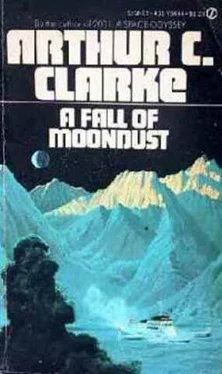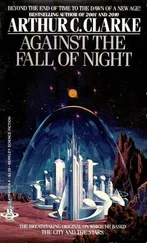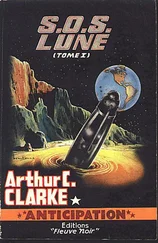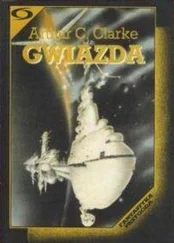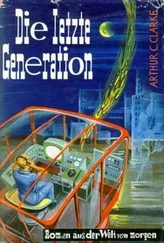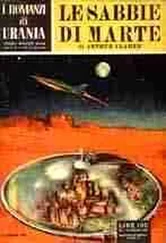Arthur Clarke - A Fall of Moondust
Здесь есть возможность читать онлайн «Arthur Clarke - A Fall of Moondust» весь текст электронной книги совершенно бесплатно (целиком полную версию без сокращений). В некоторых случаях можно слушать аудио, скачать через торрент в формате fb2 и присутствует краткое содержание. Жанр: Фантастика и фэнтези, на английском языке. Описание произведения, (предисловие) а так же отзывы посетителей доступны на портале библиотеки ЛибКат.
- Название:A Fall of Moondust
- Автор:
- Жанр:
- Год:неизвестен
- ISBN:нет данных
- Рейтинг книги:5 / 5. Голосов: 1
-
Избранное:Добавить в избранное
- Отзывы:
-
Ваша оценка:
- 100
- 1
- 2
- 3
- 4
- 5
A Fall of Moondust: краткое содержание, описание и аннотация
Предлагаем к чтению аннотацию, описание, краткое содержание или предисловие (зависит от того, что написал сам автор книги «A Fall of Moondust»). Если вы не нашли необходимую информацию о книге — напишите в комментариях, мы постараемся отыскать её.
A Fall of Moondust — читать онлайн бесплатно полную книгу (весь текст) целиком
Ниже представлен текст книги, разбитый по страницам. Система сохранения места последней прочитанной страницы, позволяет с удобством читать онлайн бесплатно книгу «A Fall of Moondust», без необходимости каждый раз заново искать на чём Вы остановились. Поставьте закладку, и сможете в любой момент перейти на страницу, на которой закончили чтение.
Интервал:
Закладка:
CHAPTER 29
“We're still in very good spirits”, said Pat, into the microphone that had now been lowered down the air shaft. “Of course, we had a bad shock after that second cave-in, when we lost contact with you — but now we're sure you'll soon have us out. We can hear the grab at work, as it scoops up the dust, and it's wonderful to know that help is so close. We'll never forget”, he added, a little awkwardly, “the efforts that so many people have made to help us, and whatever happens we'd like to thank them. All of us are quite sure that everything possible has been done.
“And now I'll hand over the mike, since several of us have messages we want to send. With any luck at all, this will be the last broadcast from Selene.”
As he gave the microphone to Mrs. Williams, he realized that he might have phrased that last remark a little better; it could be interpreted in two ways. But now that rescue was so close at hand, he refused to admit the possibility of further setbacks. They had been through so much that, surely, nothing more would happen to them now.
Yet he knew that the final stage of the operation would be the most difficult, and the most critical, of all. They had discussed it endlessly during the last few hours, ever since Chief Engineer Lawrence had explained his plans to them. There was little else to talk about now that, by common consent, the subject of flying saucers was vetoed.
They could have continued with the book readings, but somehow both Shane and The Orange and the Apple had lost their appeal. No one could concentrate on anything now except the prospects of rescue, and the renewal of life that lay before them when they had rejoined the human race.
From overhead, there was a sudden, heavy thump. That could mean only one thing; the grab had reached the bottom of the shaft, and the caisson was clear of dust. Now it could be coupled to one of the igloos and pumped full of air.
It took more than an hour to complete the connection and make all the necessary tests. The specially modified Mark XIX igloo, with a hole in its floor just large enough to accommodate the protruding end of the caisson, had to be positioned and inflated with the utmost care. The lives of Selene's passengers, and also those of the men attempting to rescue them, might depend upon this air seal.
Not until Chief Engineer Lawrence was thoroughly satisfied did he strip off his space suit and approach that yawning hole. He held a floodlight above the opening and looked down into the shaft, which seemed to dwindle away to infinity. Yet it was just seventeen meters to the bottom; even in this low gravity, an object would take only five seconds to fall that distance.
Lawrence turned to his assistants; each was wearing a space suit, but with the face plate open. If anything went wrong, those plates could be snapped shut in a fraction of a second, and the men inside would probably be safe. But for Lawrence there would be no hope at all — nor for the twenty-two aboard Selene.
“You know exactly what to do”, he said. “If I want to come up in a hurry, all of you pull on the rope ladder together. Any questions?”
There were none; everything had been thoroughly rehearsed. With a nod to his men and a chorus of “Good lucks” in return, Lawrence lowered himself into the shaft.
He let himself fall most of the way, checking his speed from time to time by grabbing at the ladder. On the Moon it was quite safe to do this; well, almost safe. Lawrence had seen men killed because they had forgotten that even this gravity field could accelerate one to a lethal speed in less than ten seconds.
This was like Alice's fall into Wonderland (so much of Carroll might have been inspired by space travel), but there was nothing to see on the way down except the blank concrete wall, so close that Lawrence had to squint to focus upon it. And then, with the slightest of bumps, he had reached the bottom.
He squatted down on the little metal platform, the size and shape of a manhole cover, and examined it carefully. The trapdoor valve that had been open during the piston's descent through the dust was leaking very slightly, and a trickle of gray powder was creeping round the seal. It was nothing to worry about, but Lawrence could not help wondering what would happen if the valve opened under the pressure from beneath. How fast would the dust rise up the shaft, like water in a well? Not as fast, he was quite certain, as he could go up that ladder.
Beneath his feet now, only centimeters away, was the roof of the cruiser, sloping down into the dust at that maddening thirty degrees. His problem was to mate the horizontal end of the shaft with the sloping roof of the cruiser — and to do it so well that the coupling would be dust-tight.
He could see no flaw in the plan; nor did he expect to, for it had been devised by the best engineering brains on Earth and Moon. It even allowed for the possibility that Selene might shift again, by a few centimeters, while he was working here. But theory was one thing — and, as he knew all too well, practice was another.
There were six large thumbscrews spaced around the circumference of the metal disc on which Lawrence was sitting, and he started to turn them one by one, like a drummer tuning his instrument. Connected to the lower side of the platform was a short piece of concertina-like tubing, almost as wide as the caisson, and now folded flat. It formed a flexible coupling large enough for a man to crawl through, and was now slowly opening as Lawrence turned the screws.
One side of the corrugated tube had to stretch through forty centimeters to reach the sloping roof; the other had to move scarcely at all. Lawrence's chief worry had been that the resistance of the dust would prevent the concertina from opening, but the screws were easily overcoming the pressure.
Now none of them could be tightened any further; the lower end of the coupling must be flush against Selene's roof, and sealed to it, he hoped, by the rubber gasket around its rim. How tight that seal was, he would very soon know.
Automatically checking his escape route, Lawrence glanced up the shaft. He could see nothing past the glare of the floodlight hanging two meters above his head, but the rope ladder stretching past it was extremely reassuring.
“I've let down the connector”, he shouted to his invisible colleagues. “It seems to be flush against the roof. Now I'm going to open the valve.”
Any mistake now, and the whole shaft would be flooded, perhaps beyond possibility of further use. Slowly and gently, Lawrence released the trap door which had allowed the dust to pass through the piston while it was descending. There was no sudden upwelling; the corrugated tube beneath his feet was holding back the Sea.
Lawrence reached through the valve — and his fingers felt the roof of Selene, still invisible beneath the dust but now only a handsbreath away. Few achievements in all his life had ever given him such a sense of satisfaction. The job was still far from finished — but he had reached the cruiser. For a moment he crouched in his little pit, feeling as some old-time miner must have when the first nugget of gold gleamed in the lamplight.
He banged three times on the roof. Immediately, his signal was returned. There was no point in striking up a Morse conversation, for, if he wished, he could talk directly through the microphone circuit, but he knew the psychological effect that his tapping would have. It would prove to the men and women in Selene that rescue was now only centimeters away.
Yet there were still major obstacles to be demolished, and the next one was the manhole cover on which he was sitting — the face of the piston itself. It had served its purpose, holding back the dust while the caisson was being emptied, but now it had to be removed before anyone could escape from Selene. This had to be done, however, without disturbing the flexible coupling that it had helped to place in position.
Читать дальшеИнтервал:
Закладка:
Похожие книги на «A Fall of Moondust»
Представляем Вашему вниманию похожие книги на «A Fall of Moondust» списком для выбора. Мы отобрали схожую по названию и смыслу литературу в надежде предоставить читателям больше вариантов отыскать новые, интересные, ещё непрочитанные произведения.
Обсуждение, отзывы о книге «A Fall of Moondust» и просто собственные мнения читателей. Оставьте ваши комментарии, напишите, что Вы думаете о произведении, его смысле или главных героях. Укажите что конкретно понравилось, а что нет, и почему Вы так считаете.
